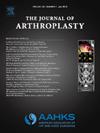The Role of Cell Therapies for the Treatment of Osteonecrosis of the Femoral Head
IF 3.8
2区 医学
Q1 ORTHOPEDICS
引用次数: 0
Abstract
Background
Osteonecrosis of the femoral head (ONFH) can cause pain, diminished function, and eventual articular collapse, disproportionately impacting younger patients. Core decompression (CD) is used to halt or at least delay postcollapse disease in patients who suffer from ONFH, but it can have variable outcomes. Orthobiologics are cellular therapies, growth factors, and biomaterial substances obtained from human cells and tissue that promote biological healing and have recently gained attention in the treatment of osteonecrosis. In this review, the role of orthobiologics in the treatment of osteonecrosis is discussed.
Methods
We reviewed the existing literature regarding orthobiologics in the treatment of precollapse ONFH. A total of 11 studies were included, consisting of six randomized controlled trials and five retrospective reviews. The included literature was obtained through a PubMed query of all studies from 1990 to 2024 that evaluated the role of ancillary cell-based therapies in the treatment of precollapse ONFH. Level IV and non-human studies were not included.
Results
There were seven studies that supported the use of orthobiologics as an augmentation strategy to CD in terms of radiographic outcomes (i.e., prevention of femoral head collapse), clinical symptoms, or conversion to total hip arthroplasty. There were four studies (one retrospective review and three randomized controlled trials) that found no clinical or radiographic difference in collapse progression in patients who received CD versus CD along with an orthobiologic augmentation strategy.
Conclusions
In summary, further adequately powered, multicenter, blinded, randomized controlled trials are necessary. In addition, many of the studies had other limitations, including a large variability in mesenchymal cell content and standardization. Although the current literature regarding orthobiologic augmentation in the treatment of precollapse ONFH appears promising, further investigation is necessary to conclude its efficacy.
细胞疗法在股骨头坏死治疗中的作用。
股骨头骨坏死(ONFH)可引起疼痛、功能减退和最终的关节塌陷,尤其影响年轻患者。核心减压(CD)用于阻止或至少延缓ONFH患者的衰竭后疾病,但它可能有不同的结果。Orthobiologics是一种细胞疗法、生长因子和从人体细胞和组织中获得的生物材料物质,可以促进生物愈合,最近在骨坏死的治疗中受到关注。本文就骨科在骨坏死治疗中的作用作一综述。方法:我们回顾了有关骨科治疗塌陷前ONFH的现有文献。共纳入11项研究,包括6项随机对照试验和5项回顾性评价。纳入的文献是通过PubMed查询1990年至2024年评估辅助细胞疗法在治疗衰竭前ONFH中的作用的所有研究获得的。未包括四级和非人类研究。结果:有7项研究从影像学结果(即预防股骨头塌陷)、临床症状或转为全髋关节置换术方面支持使用骨科作为CD的增强策略。有四项研究(一项回顾性研究和三项随机对照试验)发现,在接受CD和CD以及骨科隆胸策略的患者中,塌陷进展没有临床或放射学上的差异。结论:总之,进一步充分的、多中心的、盲法的、随机对照试验是必要的。此外,许多研究还有其他局限性,包括间充质细胞含量和标准化的很大差异。虽然目前文献中关于矫形增强术治疗塌陷前的ONFH似乎很有希望,但需要进一步的研究来确定其疗效。
本文章由计算机程序翻译,如有差异,请以英文原文为准。
求助全文
约1分钟内获得全文
求助全文
来源期刊

Journal of Arthroplasty
医学-整形外科
CiteScore
7.00
自引率
20.00%
发文量
734
审稿时长
48 days
期刊介绍:
The Journal of Arthroplasty brings together the clinical and scientific foundations for joint replacement. This peer-reviewed journal publishes original research and manuscripts of the highest quality from all areas relating to joint replacement or the treatment of its complications, including those dealing with clinical series and experience, prosthetic design, biomechanics, biomaterials, metallurgy, biologic response to arthroplasty materials in vivo and in vitro.
 求助内容:
求助内容: 应助结果提醒方式:
应助结果提醒方式:


